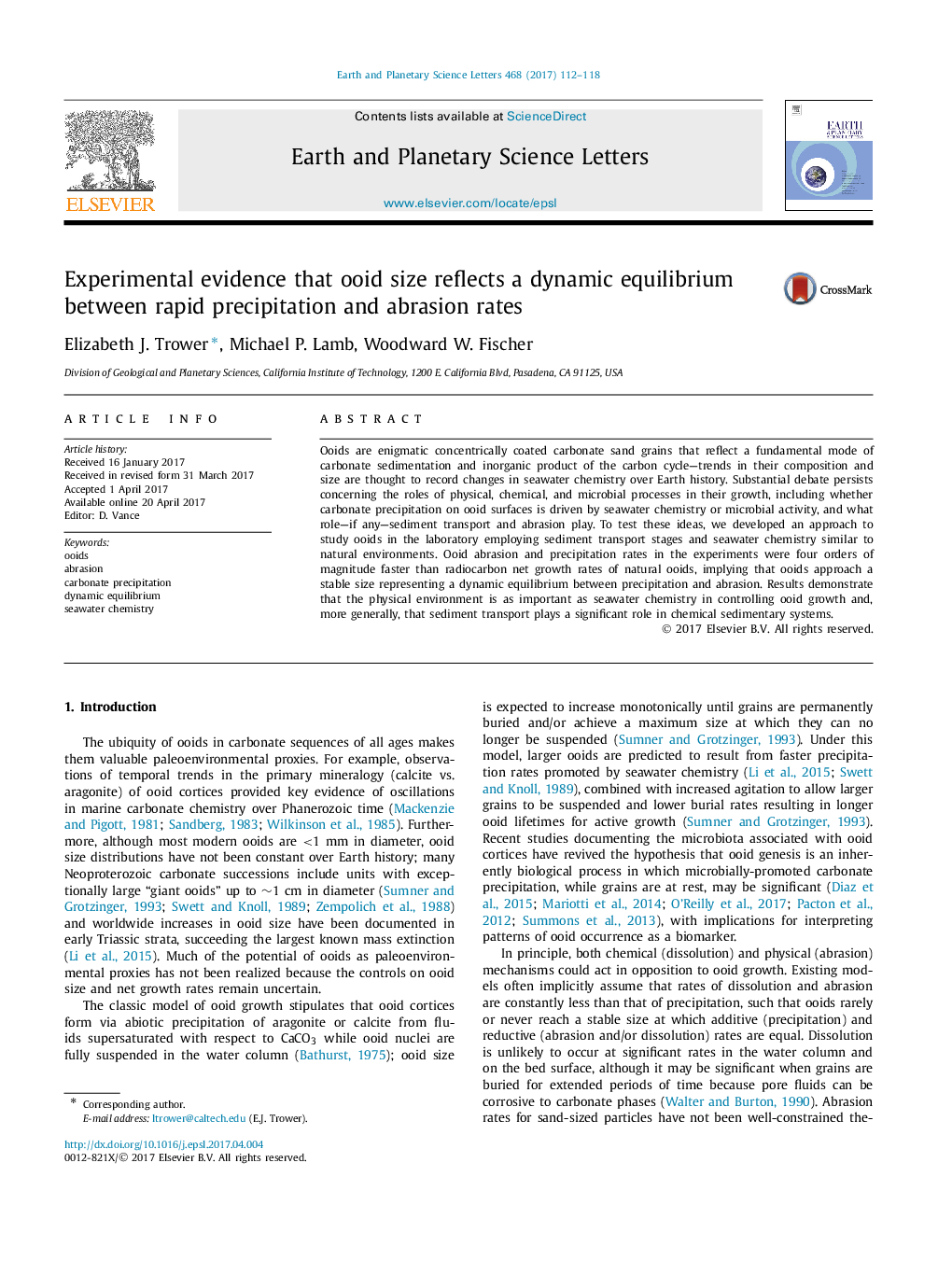| Article ID | Journal | Published Year | Pages | File Type |
|---|---|---|---|---|
| 5779844 | Earth and Planetary Science Letters | 2017 | 7 Pages |
Abstract
Ooids are enigmatic concentrically coated carbonate sand grains that reflect a fundamental mode of carbonate sedimentation and inorganic product of the carbon cycle-trends in their composition and size are thought to record changes in seawater chemistry over Earth history. Substantial debate persists concerning the roles of physical, chemical, and microbial processes in their growth, including whether carbonate precipitation on ooid surfaces is driven by seawater chemistry or microbial activity, and what role-if any-sediment transport and abrasion play. To test these ideas, we developed an approach to study ooids in the laboratory employing sediment transport stages and seawater chemistry similar to natural environments. Ooid abrasion and precipitation rates in the experiments were four orders of magnitude faster than radiocarbon net growth rates of natural ooids, implying that ooids approach a stable size representing a dynamic equilibrium between precipitation and abrasion. Results demonstrate that the physical environment is as important as seawater chemistry in controlling ooid growth and, more generally, that sediment transport plays a significant role in chemical sedimentary systems.
Related Topics
Physical Sciences and Engineering
Earth and Planetary Sciences
Earth and Planetary Sciences (General)
Authors
Elizabeth J. Trower, Michael P. Lamb, Woodward W. Fischer,
